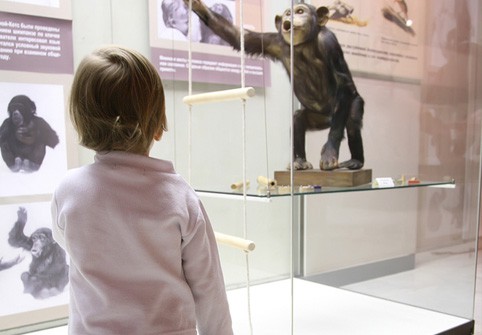Free Choice Learning: What Teachers Can Learn From Museums

What does a public school classroom have in common with a museum exhibition hall?
The answer has nothing to do with oversized models or informative laminated labels – and everything to do with the joy of learning.
As a museum educator, it sometimes seems that museums and public school paths usually only cross when it comes to state curricula and field trips. Caught between a lack of funding and several busloads of school children pouring into the lobby, it’s easy to resort to hastily photocopied scavenger hunt-style museum “activities” and forget that museums can be revolutionary. Just think about it – museums are places filled with real things you can look at and sometime touch and smell and hear, things that are old, rare, amazing, or bizarre, and you are free to take in as much or as little as you like. It’s an all-you-can-learn buffet.
Unfortunately, turned loose in a museum with a boring worksheet or led through tour-group-style does neither museums nor public education any favors because it removes from the experience that essential ingredient – free choice.
The idea behind free choice learning is that all of us – young and old – decide what, where, when and how we want to learn. Because free choice learning takes place both in and out of the classroom (and can include everything from deciding to go to a museum or watch a documentary about lions to delving into birding or amateur astronomy), pioneers of free choice learning John Falk and Lynn Dierking argue that it forms the basis of life-long, self-motivated learning.
Inspiring students to discover the joy of learning is not new to the field of public education. The concept of free choice learning is not too far from the “passion driven learning” championed by Angela Maiers, among others. The main difference between the joy of learning in schools and museums is that, with the exception of school field trips, museums can’t force you to come, stay, or learn a thing.
Your museum experience is entirely crafted by you, the visitor. If the exhibits are boring, the cafeteria food terrible and the seating nonexistent, you can leave. If the first floor of Mesoamerican artifacts isn’t your cup of tea, you can head upstairs to the hall of African mammals instead. Museums want you to learn. They want you to love learning so much that you’ll come back again and again. But they can’t force you, so they must appeal to you. You, the visitor, must be intrinsically motivated. So museums have grown cleverer about sussing out and appealing to visitors’ intrinsic motivations. For those that depend on admission sales (and with public funding uncertain, that’s many of them), they have no other choice.
I’m not suggesting that museums have figured everything out, that we should close down all the public schools and bus kids to museums instead. And ultimately, no one is going to test you on what or how much you learned at a museum. But museums have figured out a thing or two about intrinsic motivation and free choice learning.
- People need to be comfortable to learn. The work of Kathleen McLean and others has emphasized the seemingly obvious idea that people who are tired, hungry, experiencing eyestrain from tiny print or a headache from a cacophonic environment are less able to concentrate, relax, enjoy their museum experience, and learn. (And yet you can still find museum exhibits that take three hours to read and offer little or no seating.) To be comfortable, people also need to feel safe, accepted, and supported. Part of free choice learning is the freedom to choose where and how you learn – I think few students would choose to learn in an overcrowded classroom surrounded by bullies.
- People learn differently. Like free choice learning, the concept of multiple intelligences is not unique to the museum field. However, museums and free choice learning afford people opportunities to see, touch, hear, smell, and sometimes taste as per their preferences. One often-repeated museum exhibit design mantra is “multiple times, multiple ways.”
- People are not blank slates. Museum visitors bring a wide range of background information and experiences that inform their worldview and provide context for both new and existing knowledge. Teachers and presenters have an advantage over static museum exhibits in that they can tailor their content to their audience. Digital technology will likely revolutionize personalized learning for museums as well as schools.
- Different people have different motivations. In his research on motivation and free choice learning, John Falk noted that the reasons visitors choose to visit museums and what they take away from their experiences depends on their ability to fulfill identity-related goals. These “museum visitor identities” include experience seekers, insatiably curious explorers, hobbyists or professionals (for whom specific content material is interesting), those who facilitate others’ experiences (such as parents and caregivers bringing children to a museum), and those who go to museums seeking a restful or contemplative experience. While these museum visitor identities may not apply to students, the bottom line is that museums must be personally relevant to their visitors.
- Finally, in order to determine whether visitors hate your café or need more benches, whether they feel safe and included and represented at your institution, what kind of background experiences and knowledge your visitors bring, what their personal identities and motivations are, you need audience research. Ask them, study them, quantify and analyze them but, most importantly, involve them in their own learning. Museum attendance, for better or worse, is not a requirement. Museums must understand visitors and non-visitors in order to appeal to them. It can’t hurt schools to do the same.






0 Comments
Leave a Comment
Your email address will not be published. All fields are required.